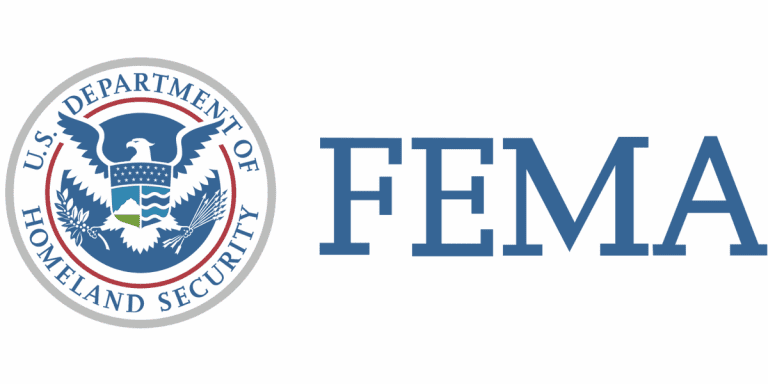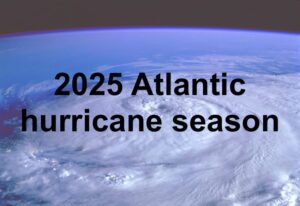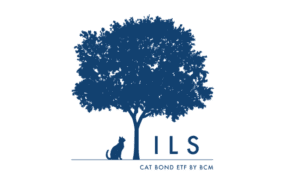FEMA pegs NFIP hurricane Ian claims under $5.3bn, below cat bond trigger

The U.S. Federal Emergency Management Agency (FEMA) has issued an estimate of flood insurance claims for the National Flood Insurance Program (NFIP) from hurricane Ian, giving a range of $3.5 billion to $5.3 billion, at which level the catastrophe bonds wouldn’t face losses.
FEMA’s reinsurance program attaches at $4 billion of losses, so with this initial estimate it seems highly likely the traditional reinsurance partners will face some recoveries made by the NFIP under its tower.
But, the lowest down of the FloodSmart Re catastrophe bonds only attaches at $5.32 billion currently, suggesting that, if this initial estimate range is wide enough to encompass the eventual hurricane Ian flood insurance claims burden, then the catastrophe bond market could be safe from losses via the NFIP’s FloodSmart Re program.
FEMA said late yesterday that the NFIP has now received over 44,000 flood claims related to hurricane Ian and has already paid nearly $437 million to policyholders.
FEMA said that its initial estimate of flood insurance losses projects that hurricane Ian could potentially drive claims losses of between $3.5 billion and $5.3 billion for the NFIP, including loss adjustment expenses.
These losses are from flood insurance claims received across five states after the hurricane, but with the majority coming from Florida.
FEMA said this initial estimate is based on policy information, daily reports of claims and payments made, significant historical events patterns of reported claims and payments, current economic conditions and claim adjuster observations. FEMA said this will continue to be refined as more data and modelling information comes in.
FEMA highlighted its annual traditional reinsurance program, that pays a percentage of flood insurance losses for the NFIP above a $4 billion trigger, as well as its three capital market placements (the FloodSmart Re cat bonds) which it said have “a recovery payment beginning at $5.32 billion in received claims payments.”
When we last reported on the potential cat bond market exposure to the NFIPS’s claims burden from hurricane Ian, we had estimated the current attachment point of the lowest down, in the reinsurance tower, of the FloodSmart Re cat bonds, as being around $5.3 billion of losses to the NFIP from a named storm event.
Which was close, but as a reminder, these cat bonds get reset annually, so the attachment points change from the initial information we have available to us on issuance.
As we explained then, taking an average cost of the NFIP’s claims from hurricane Katrina and hurricane Harvey gives you a $106,416 per-claim figure. Add something for inflation and multiply it by the claims figures reported for hurricane Ian so far and you were getting close to the reinsurance attachment point.
Now, with 44,000 claims reported, that rough maths will get you to around $5.1 billion, or slightly more, in NFIP claims payments after hurricane Ian.
So, it seems too early to discount any losses to the lowest down FloodSmart Re catastrophe bonds, that attach at $5.32 billion, but this initial projection from FEMA will give some comfort to the market and likely result in some more price recoveries for some of the FloodSmart cat bonds that sit higher up in the NFIP’s reinsurance tower.
The $125 million Class B tranche of the FloodSmart Re Ltd. (Series 2021-1) issuance is the one that sits lowest in the NFIP reinsurance tower, attaching at $5.32 billion of losses.
This tranche had been marked down for bids of around 10 to 15 cents on the dollar on some pricing sheets, suggesting the market expected a significant loss to it.
But the notes cover losses across quite a wide layer of the reinsurance tower, covering just 8.18% of a layer that stretches to roughly $6.85 billion, it appears.
Meanwhile, the FloodSmart Re Ltd. (Series 2020-1) $300 million Class A notes would be next to attach, at roughly $5.7 billion of losses to the NFIP, but these only cover 3.04% of a layer stretching to $9 billion of losses.
After that are the $25 million Class C tranche from the FloodSmart Re Ltd. (Series 2022-1) issuance that attach at $6 billion and cover a share of losses to $7 billion, then the $400 million Class A tranche of the FloodSmart Re Series 2021-1 cat bond that attach around $6.15 billion and cover 17.13% of losses up to around $8.85 billion.
All of which should make it very clear, that if FEMA’s initial projection is accurate, there will be no FloodSmart Re cat bond losses, but even if it’s out by a billion, then the losses will only be relatively minor, across the exposed bonds with just over 50% of the lowest attaching cat bond eroded.
The cat bond market will likely take this as positive news of the development of hurricane Ian losses and we should see further recoveries from the cat bond index and fund performance, as some of the FloodSmart Re deals are marked back up again following the announcement of this estimate.
For FEMA’s traditional reinsurance tower, that attaches at $4 billion of losses, the recoveries look almost certain to occur, but should again be relatively minor given the structure of the program, which is as follows.
FEMA’s $1.064 billion 2022 traditional reinsurance tower covers the NFIP for:
4.163% of losses between $4 billion and $6 billion.
26.565% of losses between $6 billion and $8 billion.
22.453% of losses between $8 billion and $10 billion.
So, at the current FEMA projection, only the lowest layer will be eaten into by losses from hurricane Ian.
As FEMA’s NFIP claims rise and if they go above the current estimate, then losses will rise for the catastrophe bond and reinsurance market, with FEMA having $2.49 billion of reinsurance coverage for fiscal year 2022, but the total would need to reach $10 billion to erode all of that, given how the tower is structured.
As we also reported recently, FEMA has already begun its process for renewing the traditional flood reinsurance for the NFIP for 2023. A relatively low initial estimate will certainly assist in that process.
Finally, it’s worth noting again that risk modeller RMS said it estimates the NFIP’s losses from hurricane Ian could reach $10 billion, which as we explained would mean the entire reinsurance and cat bond tower would be exhausted.
So the total could rise and more of the cat bonds come into view of the NFIP’s losses from hurricane Ian, so we don’t expect to see the notes marked right back up yet. But, again, this does seem like positive news for the cat bond market and reinsurers, at this stage of the claims development after hurricane Ian.







